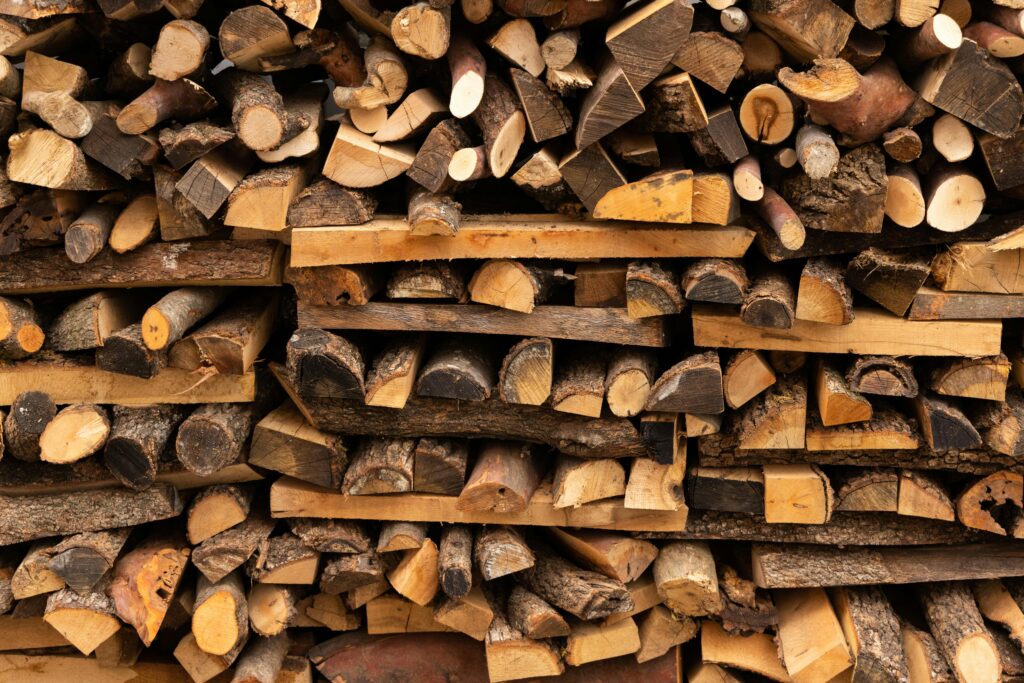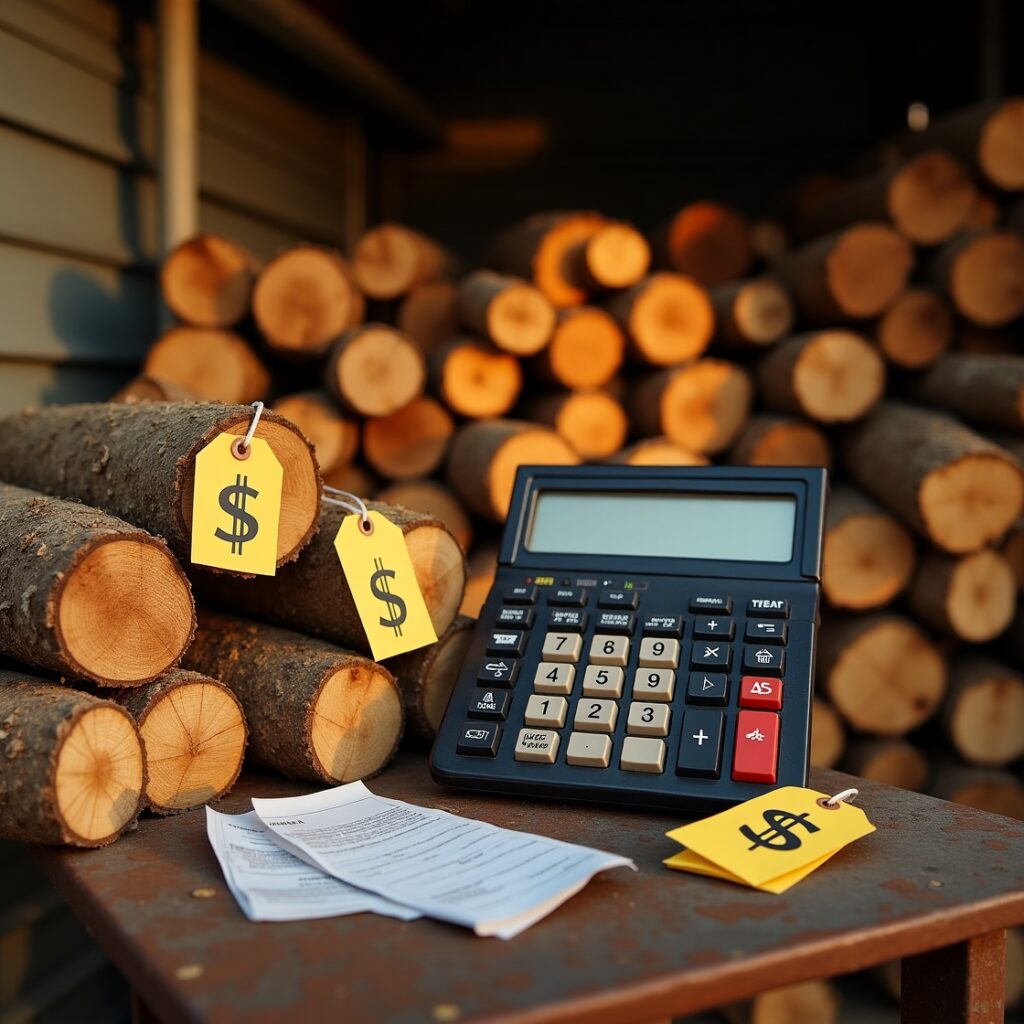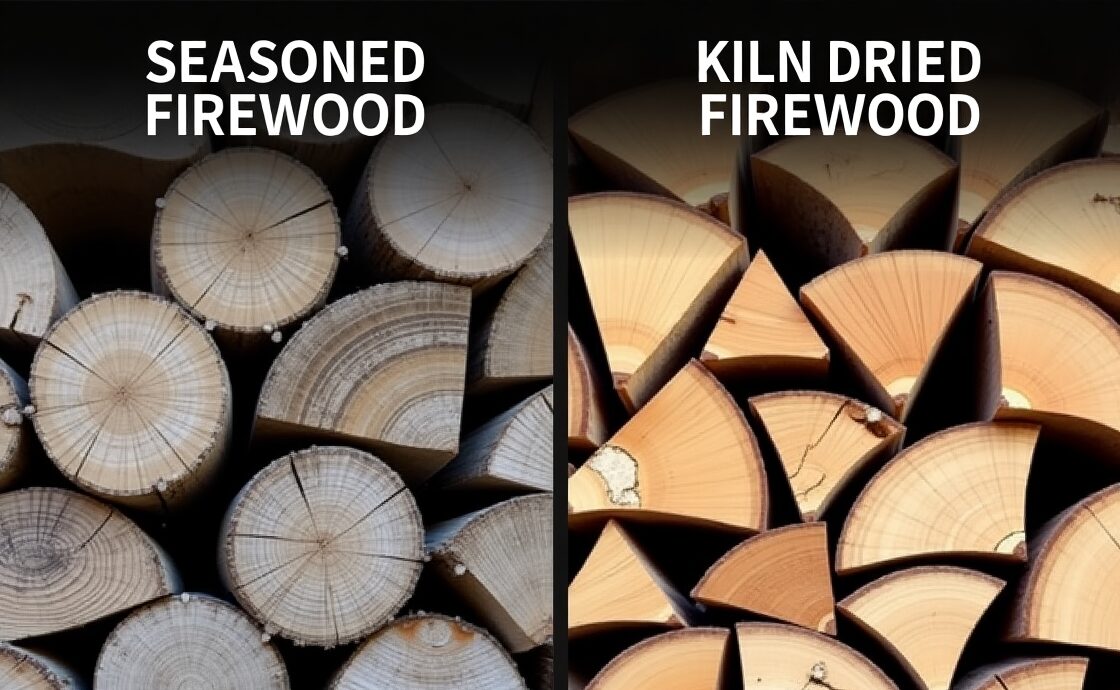Standing in my backyard one crisp October morning, I found myself staring at two distinct piles of firewood. One stack, labeled “seasoned firewood,” looked a little weathered, slightly gray, and had that familiar rough-cut aroma. The other, neatly bundled and sharp-edged, was “kiln dried firewood,” advertised as premium, ready-to-burn wood. Like many wood stove owners, I asked the question most of us do at some point: Seasoned firewood vs kiln dried — which is better?
That question came with real consequences. A few winters back, I made the mistake of trusting a “seasoned” cord from a new supplier. Let’s just say damp logs and sub-zero nights don’t mix well. Since then, I’ve burned, split, stored, tested, and tracked both kiln dried and seasoned firewood across five heating seasons.
So, if you’re a homeowner debating the best fuel for your stove, I’ll walk you through everything that matters — from moisture content and burn performance to cost comparisons, storage tips, and environmental impact. Here’s the real-world breakdown I wish I had when I started.
Understanding Seasoned vs Kiln Dried Firewood

When comparing seasoned firewood vs kiln dried, it’s not just about looks — it’s about performance, processing, and predictability. The difference between seasoned and kiln dried firewood lies in how each is dried, how consistently it burns, and how much moisture it retains.
Seasoned firewood is wood that’s been air-dried naturally, usually by stacking and letting time and airflow do the work. Proper seasoning takes 6 to 18 months, depending on the species, climate, and how well the stack is protected.
On the other hand, kiln dried firewood is dried in a controlled environment — typically an industrial kiln — where temperature, airflow, and humidity are carefully managed. This process usually takes just 36 to 48 hours and produces firewood with a consistent, low moisture content.
I remember my first full cord of “seasoned” oak. It looked fine on the outside, but split it open, and the center was damp and cold. Lesson learned: seasoning isn’t always consistent. That’s when I started comparing it to kiln dried wood — and the difference was night and day.
Moisture Content: The Critical Difference

This is where the seasoned firewood vs kiln dried debate really heats up — quite literally.
According to the EPA’s guide to better burning, Seasoned wood typically has a moisture content between 20% and 30%, but it can vary significantly. Kiln dried firewood, in contrast, consistently falls between 10% and 18%. Why does that matter? Because moisture content directly affects ignition speed, BTU output, burn efficiency, and even creosote buildup in your chimney.
Using my moisture meter, I’ve tested dozens of splits. Seasoned maple? 26% average. Kiln dried ash? A consistent 14%.
Let’s talk heat. A cord of well-seasoned oak delivers around 22 million BTUs, but kiln dried oak can edge closer to 26-28 million BTUs. That’s more heat, faster ignition, and less energy wasted on boiling off excess moisture.
High moisture firewood (above 25%) also tends to hiss, smolder, and produce more smoke — all of which lower your heating performance and raise your creosote risk.
Performance Comparison: Heat, Burn Time & Efficiency

Ignition and Starting Fires
When it’s 15°F outside and you’re trying to get the stove going before your morning coffee, every second counts.
Kiln dried firewood lights quickly, usually within 30 seconds to a minute with a match and kindling. Seasoned wood often takes more time, especially if it’s on the higher end of moisture tolerance.
I’ve tested side-by-side burns. Kiln dried fir? Two pieces and a handful of kindling, and I had flames in less than a minute. Seasoned fir? Took over three minutes and needed a firestarter cube to stay lit.
Burn Time and Heat Output
When it comes to seasoned firewood vs kiln dried burn time, kiln dried wood generally burns longer and hotter. Why? Less moisture = more efficient combustion.
Here’s a snapshot from my winter burn logs:
- Kiln dried oak: Average burn time of 4.5 to 6 hours per large log
- Seasoned oak: Typically 3.5 to 4.5 hours, depending on moisture
Those extra BTUs also warm up the room faster, which means your wood stove fuel consumption goes down over time.
Smoke Production and Creosote
I noticed a huge difference in chimney deposits after switching to mostly kiln dried firewood. Less moisture means cleaner burns, less smoke, and minimal creosote buildup — crucial for safety and stove maintenance.
Even in visual tests, seasoned wood emits more white smoke and sizzles early on. Kiln dried firewood? Clean flame and almost no visible smoke.
Ease of Storage
Now here’s where kiln dried vs seasoned firewood storage requirements differ:
- Kiln dried wood can be stored indoors or in enclosed areas, thanks to its low moisture and pest-free nature.
- Seasoned firewood still needs to breathe — store it covered, off the ground, and in a well-ventilated space.
I stack kiln dried wood in my garage during winter without issue. I’d never do that with seasoned logs — it would just bring musty odors and possible mold.
Cost Analysis: Seasoned firewood vs Kiln Dried Value

So, what’s the seasoned firewood vs kiln dried cost comparison look like?
Prices vary by region, but here’s what I’ve paid in the Northeast:
- Seasoned hardwood: $220–$280 per cord
- Kiln dried hardwood: $350–$450 per cord
Yes, kiln dried firewood costs more upfront, but over time, you burn fewer cords and get better heat per piece.
I tracked three winters’ worth of use:
- Year 1 (seasoned): Burned 4.5 cords, total cost $1,080
- Year 2 (kiln dried): Burned 3 cords, total cost $1,050
- Year 3 (mix): Burned 3.5 cords, cost ~$1,000
It practically evens out. For moderate users, the best choice — seasoned or kiln dried firewood — depends on how much you value convenience, heat output, and ease of use.
Environmental and Practical Considerations
You might be wondering about the seasoned firewood vs kiln dried environmental impact.
Kiln drying requires energy, typically natural gas or electricity, which adds to the carbon footprint. However, if you’re burning more efficiently and reducing creosote buildup, it may offset that with fewer chimney cleanings and stove wear.
Seasoned wood, especially if you split and store it yourself, has a lower environmental impact and supports local sourcing. But it takes time, space, and proper handling.
From a storage and supply standpoint:
- Kiln dried is often ready-to-use on delivery — great for last-minute buyers.
- Seasoned wood usually needs months of additional drying, unless from a trusted supplier.
Which Should You Choose for Your Wood Stove?
So, which burns better: seasoned or kiln dried firewood?
In my experience, kiln dried firewood wins on ignition speed, heat output, cleaner burns, and indoor storage. It’s ideal for busy homeowners, people in colder climates, or those who don’t want to fuss with seasoning their own wood.
But well-seasoned firewood — when properly dried, stored, and tested — is still a solid, budget-friendly option. It’s perfect for DIY types or folks with ample yard space and time to manage the process.
Conclusion: Burn Smart, Not Just Hot
After burning both types for five winters, here’s my take: if you want consistent performance, quick starts, and less chimney maintenance, kiln dried is worth the premium. If you’re budget-conscious and can season your own wood properly, seasoned firewood still holds its own.
Whatever you choose, the key is moisture control, proper storage, and trustworthy suppliers. Don’t just go by labels — test, track, and tweak based on your stove and home.
Whether you’re buying your next cord or planning ahead for next season, now you’re armed with real-world insights to make the best choice for your fire.
Once you’ve decided between seasoned and kiln dried, the next question is: Which wood species should you actually burn? Get our top picks in Best Firewood for Wood Stove: 6 Top Choices for Maximum Heat.
FAQs: Seasoned Firewood vs Kiln Dried, What Homeowners Really Want to Know
Can I mix seasoned firewood with kiln dried in the same fire?
Yes, and I often do. If you’ve got a stash of seasoned wood that’s dry enough (moisture under 20%), mixing it with kiln dried can give you the best of both worlds. The kiln dried pieces help kickstart the burn, while the seasoned logs can carry the heat longer. Just avoid mixing if the seasoned wood is damp, that’ll slow the whole fire down.
Why does kiln dried firewood burn faster even though it costs more?
This is one of those head-scratchers until you see it in action. Kiln dried wood burns more efficiently, not necessarily faster in a bad way. Less moisture means more of the wood’s energy goes into heat, not steaming off water. So while it ignites quickly, the overall heat output per log is higher. That’s why the seasoned firewood vs kiln dried debate often boils down to quality over quantity.
Does kiln dried firewood have bugs or mold like seasoned wood sometimes does?
Not usually, and that’s a big perk. The kiln drying process heats the wood to temperatures high enough to kill off insects, larvae, and mold spores. I’ve pulled stacks of kiln dried logs from my garage mid-winter and never found a single creepy crawler. With seasoned firewood, especially from a new supplier, you’re rolling the dice unless it’s been properly stored and treated.
Is kiln dried firewood always better than seasoned firewood?
Not always. It depends on your setup and priorities. If you’re tight on time, space, or patience, kiln dried is a lifesaver, especially in cold climates or if you rely on wood heat daily. But if you’ve got a good seasoning setup and can plan a year ahead, seasoned wood can work just fine. In the seasoned firewood vs kiln dried showdown, it really comes down to what “better” means for you, convenience, cost, or control.
Can I season my own firewood to match kiln dried performance?
Almost, but it takes effort. You’ll need at least 12 months of drying time, depending on the species, and good airflow around your stack. Cover the top but keep the sides open. Check moisture levels with a meter, that tool is worth every penny. I’ve gotten seasoned wood down to 18%–20%, but never as low or as consistent as kiln dried. It’s doable, but requires planning and patience.

